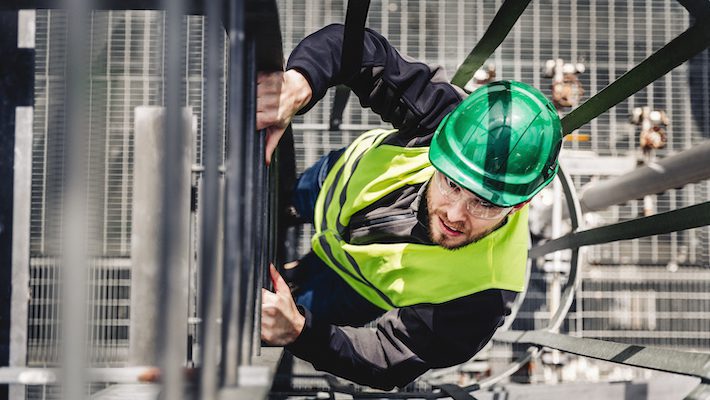Workplace accidents involving falls from height represent a significant cause of serious injuries and fatalities. OSHA introduced amendments to its regulations in 2016 with an aim to augment worker safety against fall risks, integrating advanced safety technology into access systems. Effective from November 19, 2018, these modified rules altered the prerequisites for fixed ladders extending over 24 feet from a lower level.
As a company dedicated to meeting OSHA standards, GSM Industrial maintains a keen eye on evolving regulations. Our expert metal fabricators are here to help you comprehend and adapt to the latest OSHA mandates, starting with an understanding of the reasons behind the changes.
The Evolution of Fixed Ladder Cages and Fall Protection
Conventionally, fixed ladders equipped with cages were the norm for safeguarding employees ascending to heights above 20 feet.
According to the OSHA 1910.21 rules, fixed ladders exceeding 20 ft were mandated to have a cage, defined as an enclosure affixed to the fixed ladder’s side rails or the structure to surround the ladder’s climbing space for the safety of the climber. Although the description didn’t specify the cage’s protective mechanism, it was clearly meant to decelerate a fall until the individual hit a platform.
However, research over the years demonstrated that cages are not sufficient in preventing falls. Some studies even suggest that they could potentially induce injuries during a fall. Due to these findings, OSHA revised its General Industry regulations in 2016, prioritizing fall protection over general safety.
The Transformation in OSHA Standards
In a significant shift, OSHA revised its fixed ladder regulations under the Occupational Health and Safety Standards, Subpart D, Standard 1910.28. The most impactful change involves phasing out cages on fixed ladders. The updated regulations now necessitate a personal fall arrest system (PFAS) or ladder safety system for ladders over 24 ft. For multi-section ladders exceeding this height, platforms or rest points are required. Fixed ladders without cages must have a rest platform every 150 feet at least.
Guidelines for Ensuring Compliance
Keeping your business compliant and your workforce safe is our top priority. If you’re uncertain about your ladders and access platforms’ compliance with the updated OSHA rules, feel free to
contact us. Our account representatives can visit your site, assess the situation, and offer appropriate recommendations. You can also refer to the OSHA Fact Sheet for more information.
When assessing your facility’s compliance, consider these standards:
New Fixed Ladders
As per OSHA’s revised regulations, all new fixed ladders over 24 ft installed at your facility should incorporate a PFAS.
Modifications or Replacements of Existing Ladders
If you’re altering or replacing existing ladder sections, the installation of a fall arrest system on the modified or fixed part is mandatory.
By November 18, 2036, all ladders over 24 ft. must be retrofitted with a PFAS or ladder safety system, even without the removal of the existing cage.
Crafting OSHA-Compliant Fixed Ladders
Although this article outlines the major changes to OSHA’s standards for fixed ladders above 24 ft, fabricating OSHA-compliant ladders involves numerous other essential measurements. From climbing width, the distance between ladder rungs and a structure, grab bar extension heights, clearance above access levels, and more, GSM Industrial consistently meets every standard with excellence. Whether you need a new fixed ladder system, a PFAS installed on an existing ladder, or any other ladder-related service, don’t hesitate to contact us.

